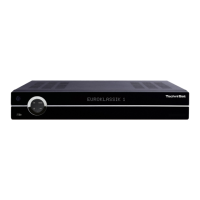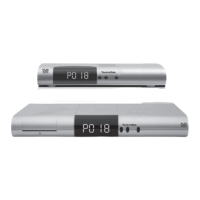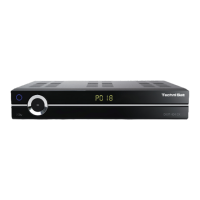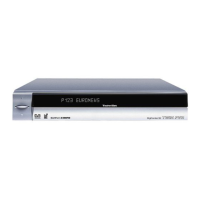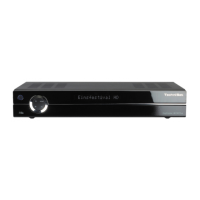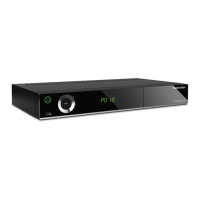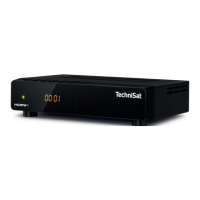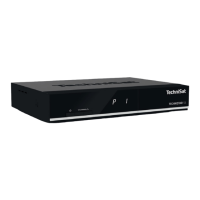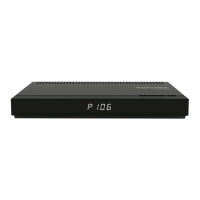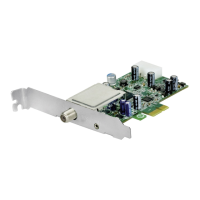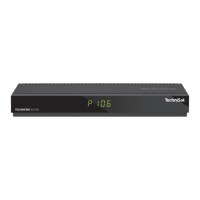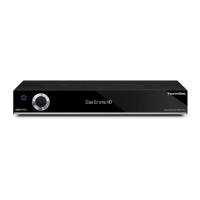LOF low band
LOF (Local oscillator frequency) is the frequency with which an LNB transposes the received
frequency into the so-called 1st intermediate frequency, which can subsequently be received
by the digital receiver.
So-called universal LNBswork with 2 LOFs in order to be able to tramsform the entire recep-
tion range from 10.7 to 11.8 GHz (low-band) and 11.7 to 12.75 GHz (high-band).
> Enter the required symbol rate in this line by means of the Numeric keyboard.
LOF high band
> Enter the required symbol rate in this line by means of the Numeric keyboard.
Transition LOF low/high (transition)
> Enter with the help of the numerical keyboard the frequency at which your LNB
changes from low-band to high-band.
Signal-Quality
If you have entered the information from the test transponder correctly, these lines will show
the strength and the quality of the signals.
6.4.4 Rotating Unit
When operating the digital receiver on a rotating unit with a DiSEqC control (Level 1.2),
you should switch on the DiSEqC controller (Section 6.4.2) and observe Section 9 of the
operaing manual.
7 Operation
7.1 Turning on and off
> Turn the digital receiver on by pressing the On/Standby key on the device or on
the remote control.
> You turn the device off by pressing this key again on the device or on the remote con-
trol.
> The device is now in standby, the time is thereby displayed on the
device (if activated in Section 6.2.4). The device must import the time
again, iif this is not displayed. For this purpose, turn the device on and receive e.g.
ZDF for approximately 30 seconds in order to read in the time automatically.
7.2 Programme selection
7.2.1 By means of the programme up/down keys
> Select the programmes with the programme keys up/down on the receiver or on
the remote control, in each case by one programme memory step.
19
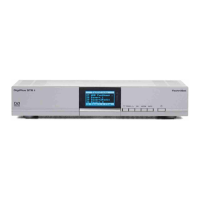
